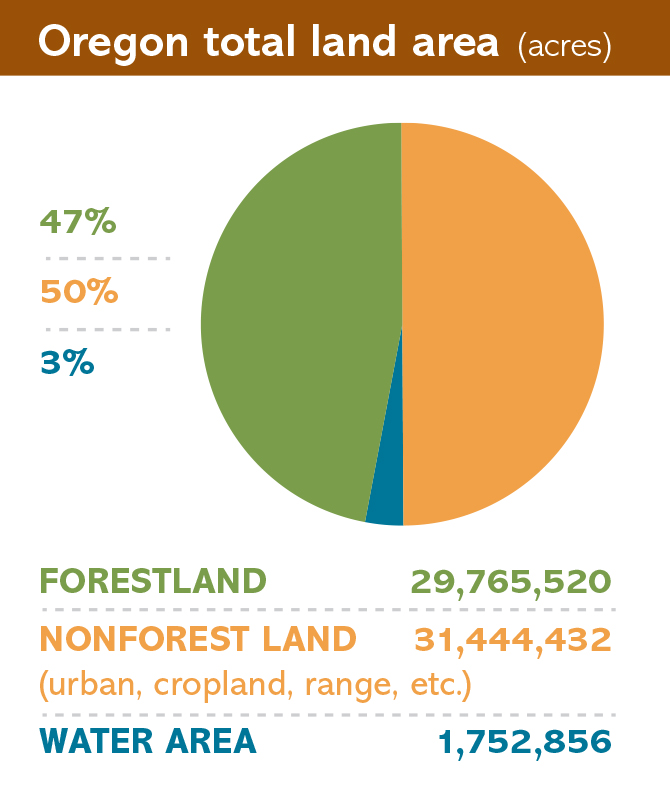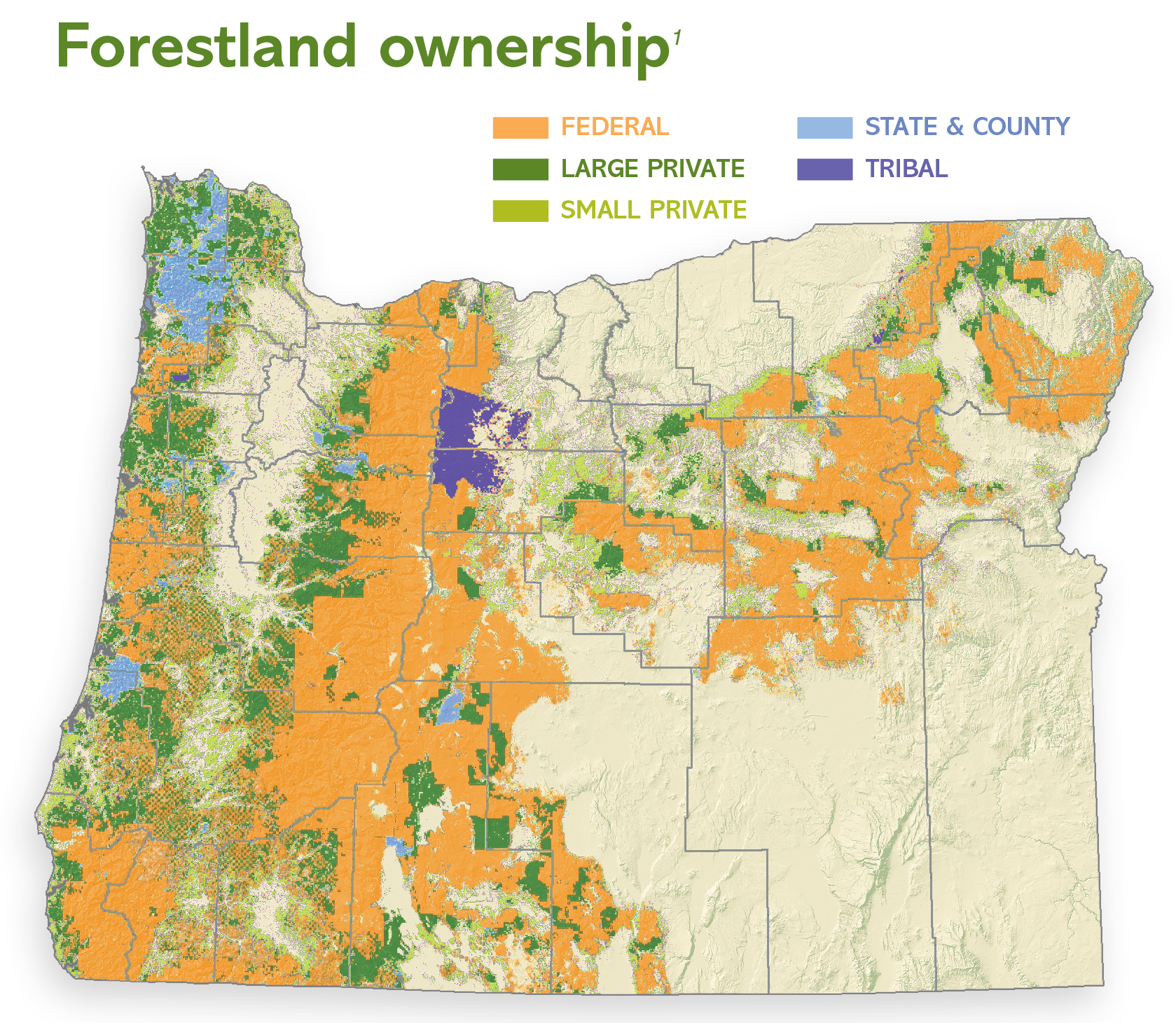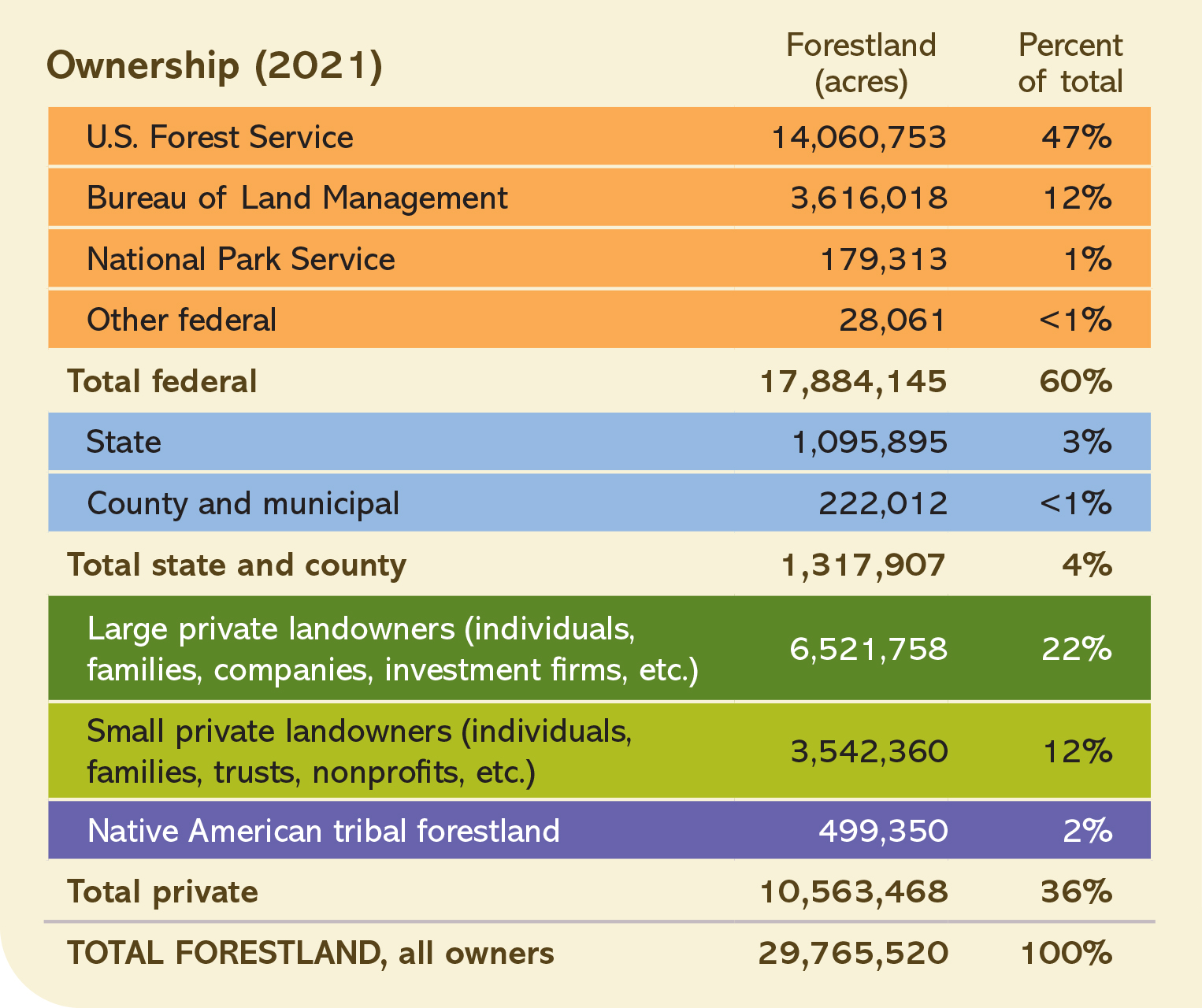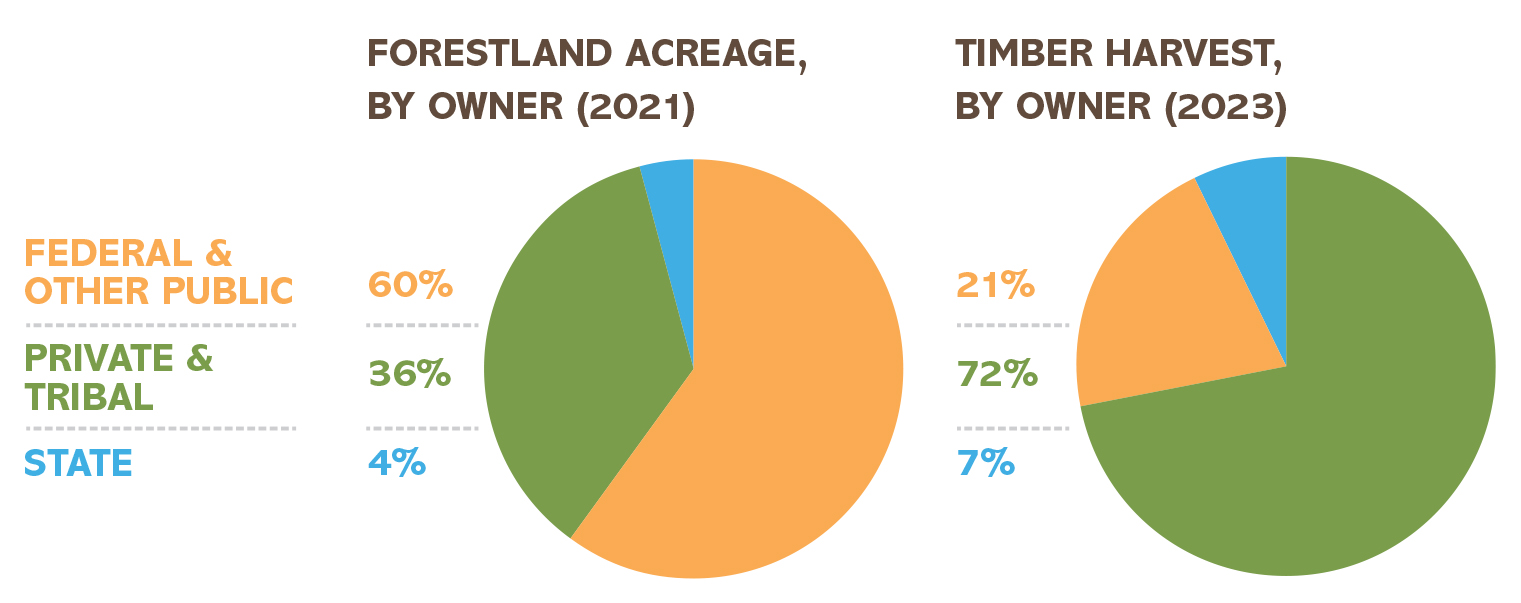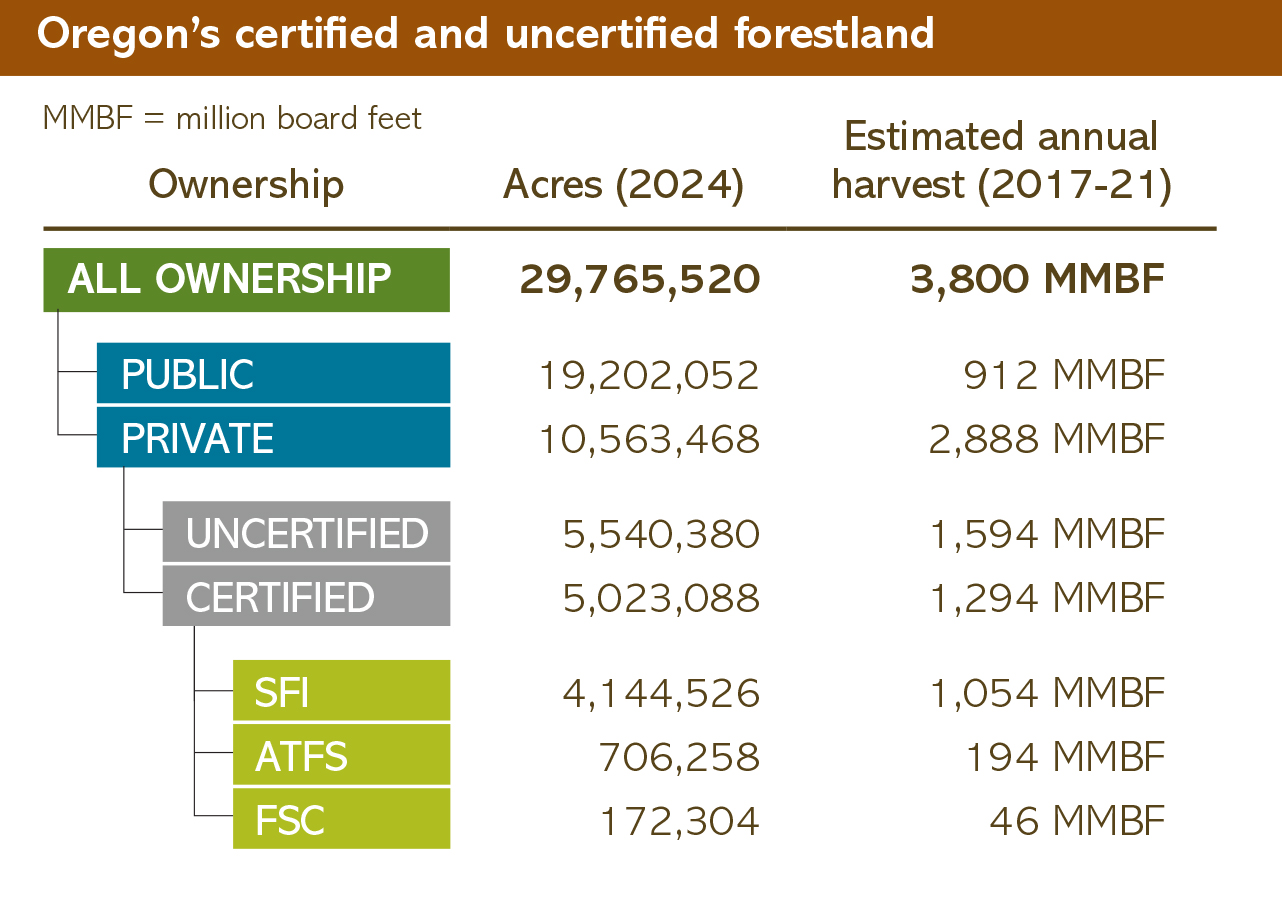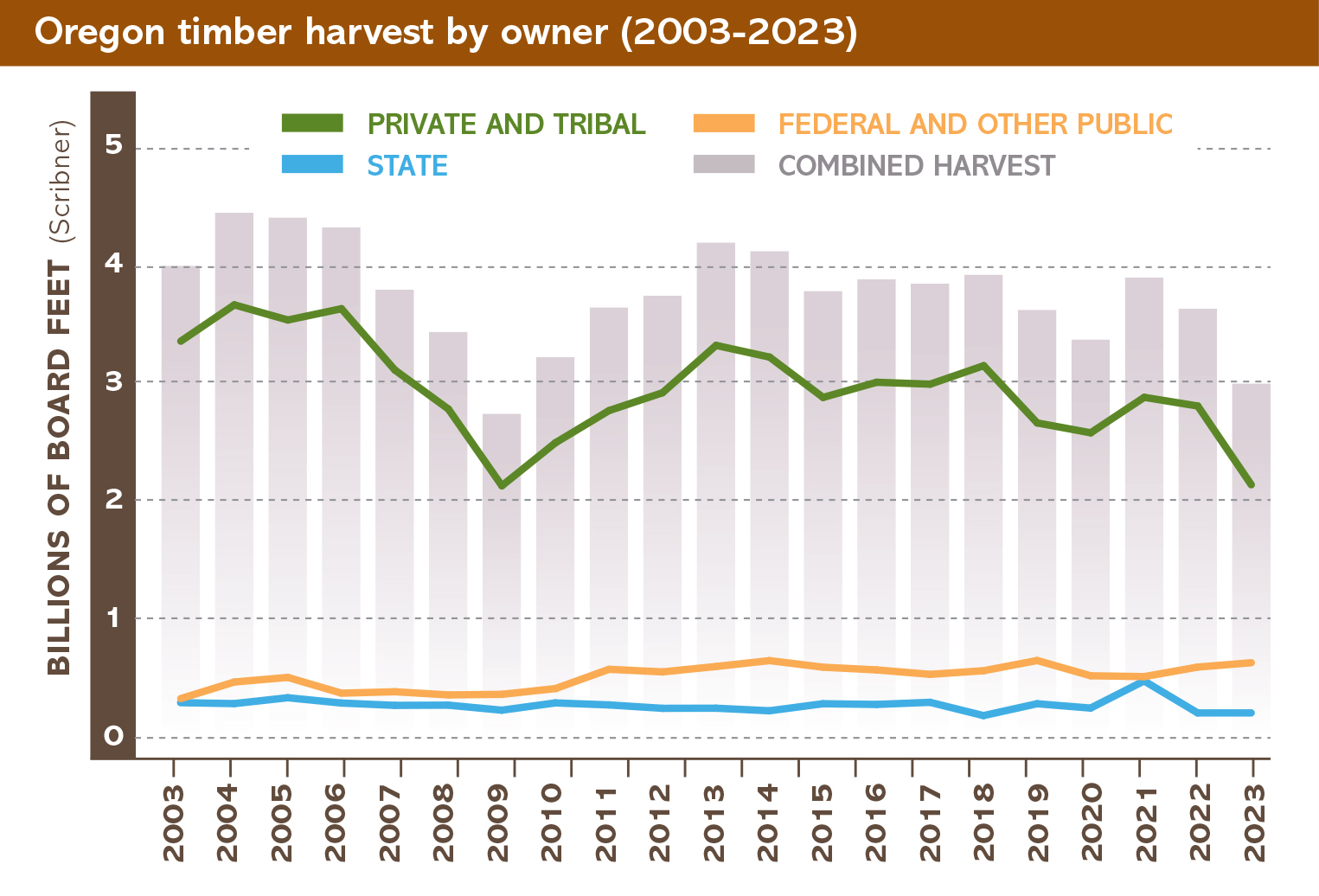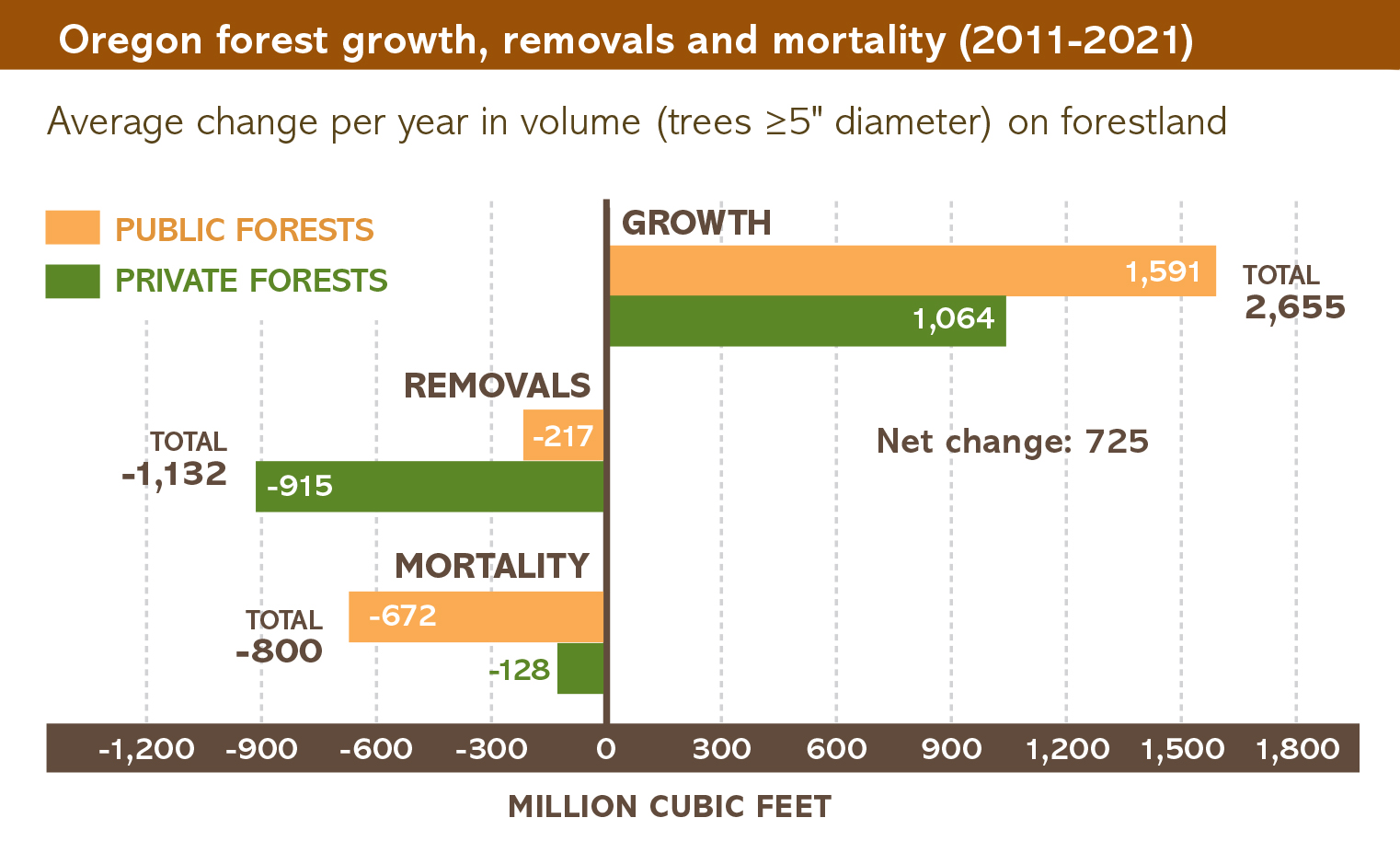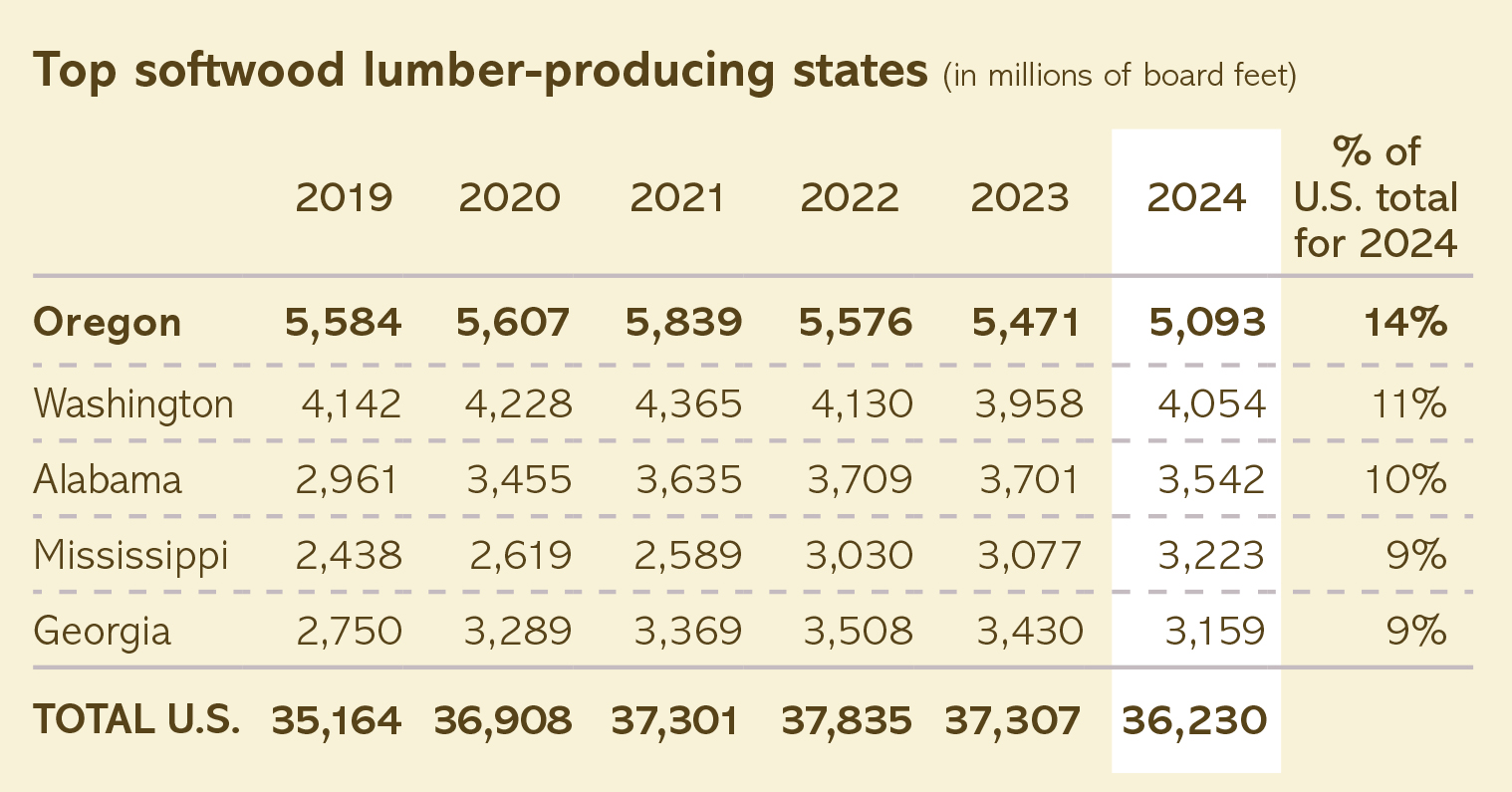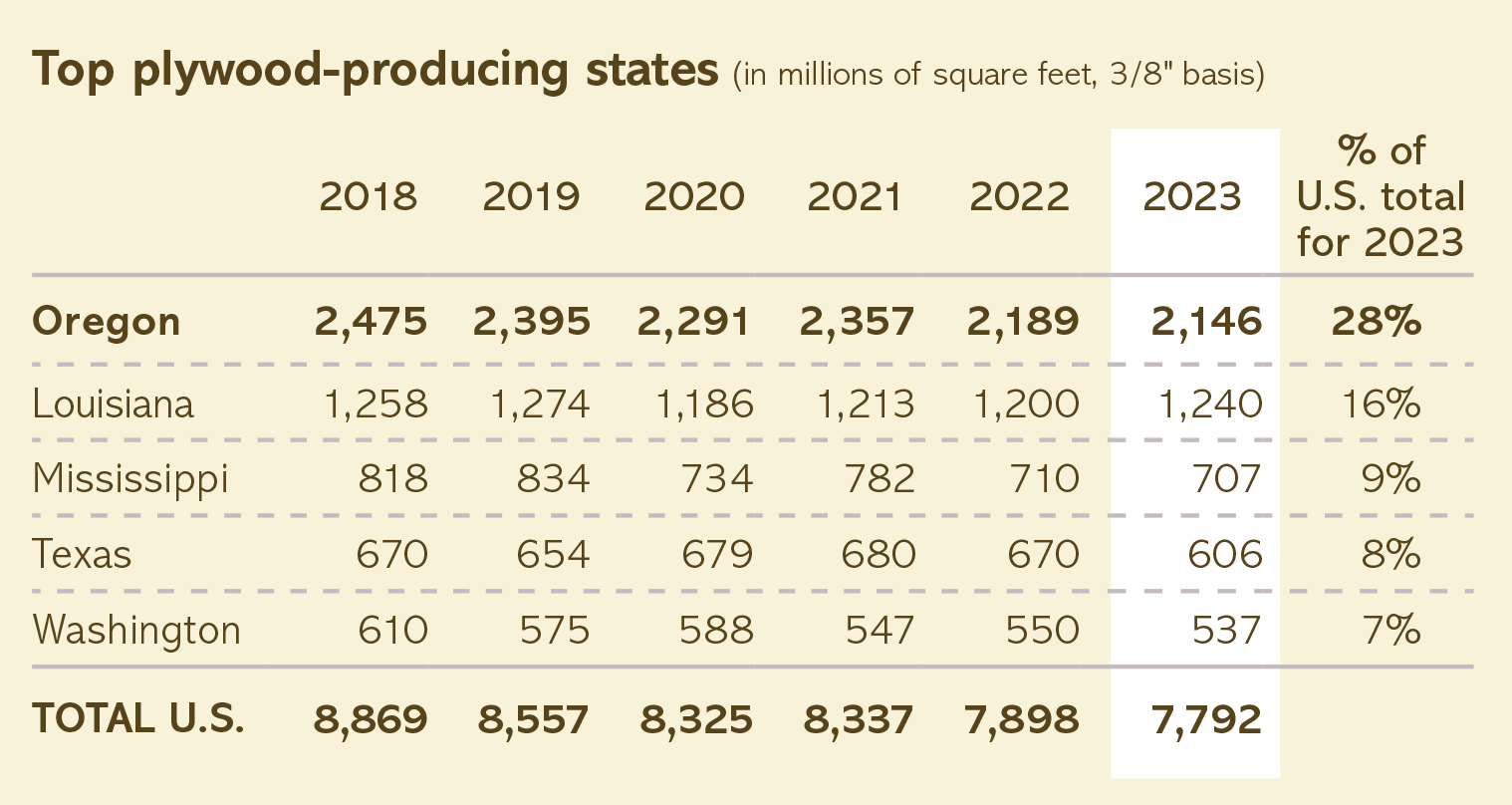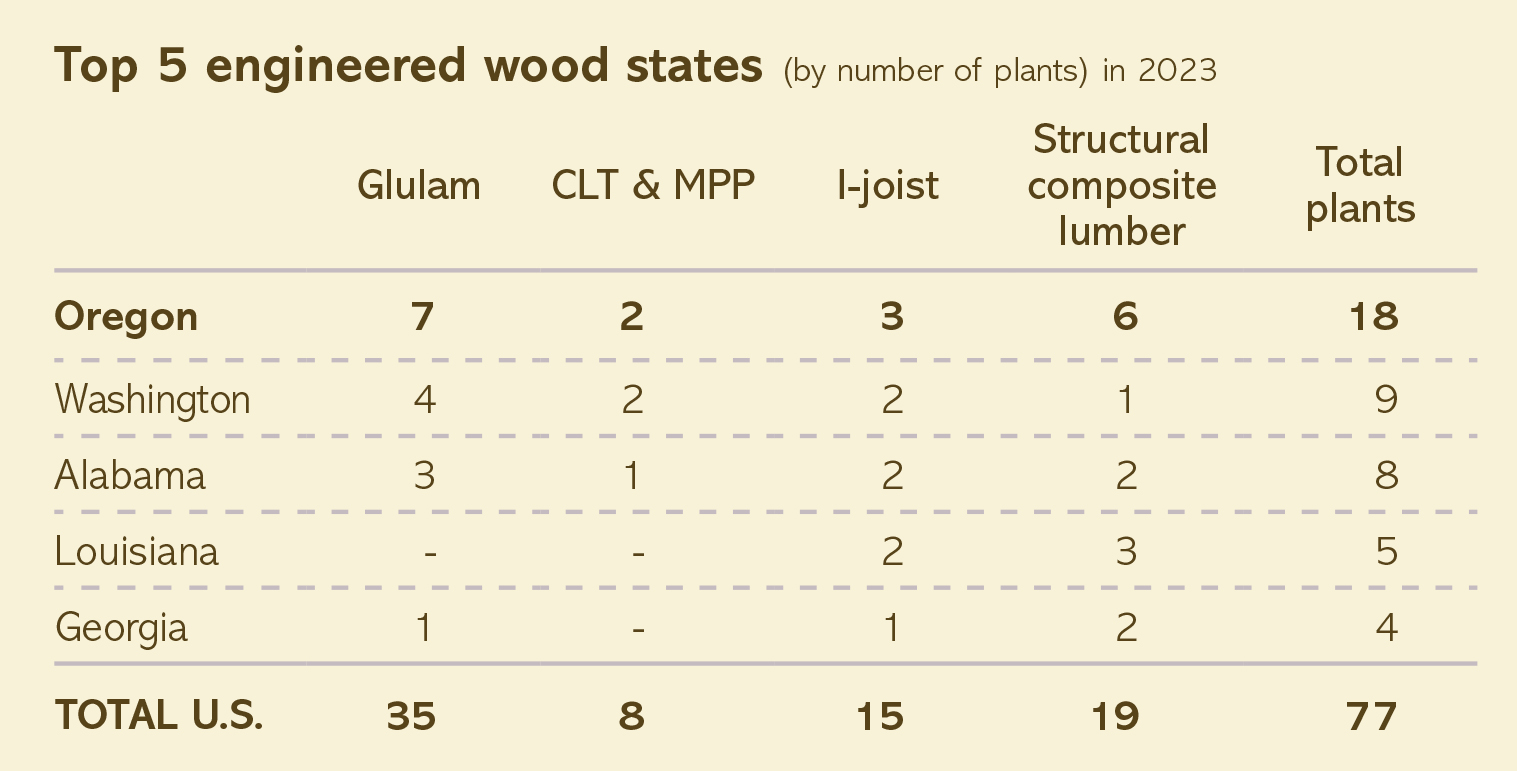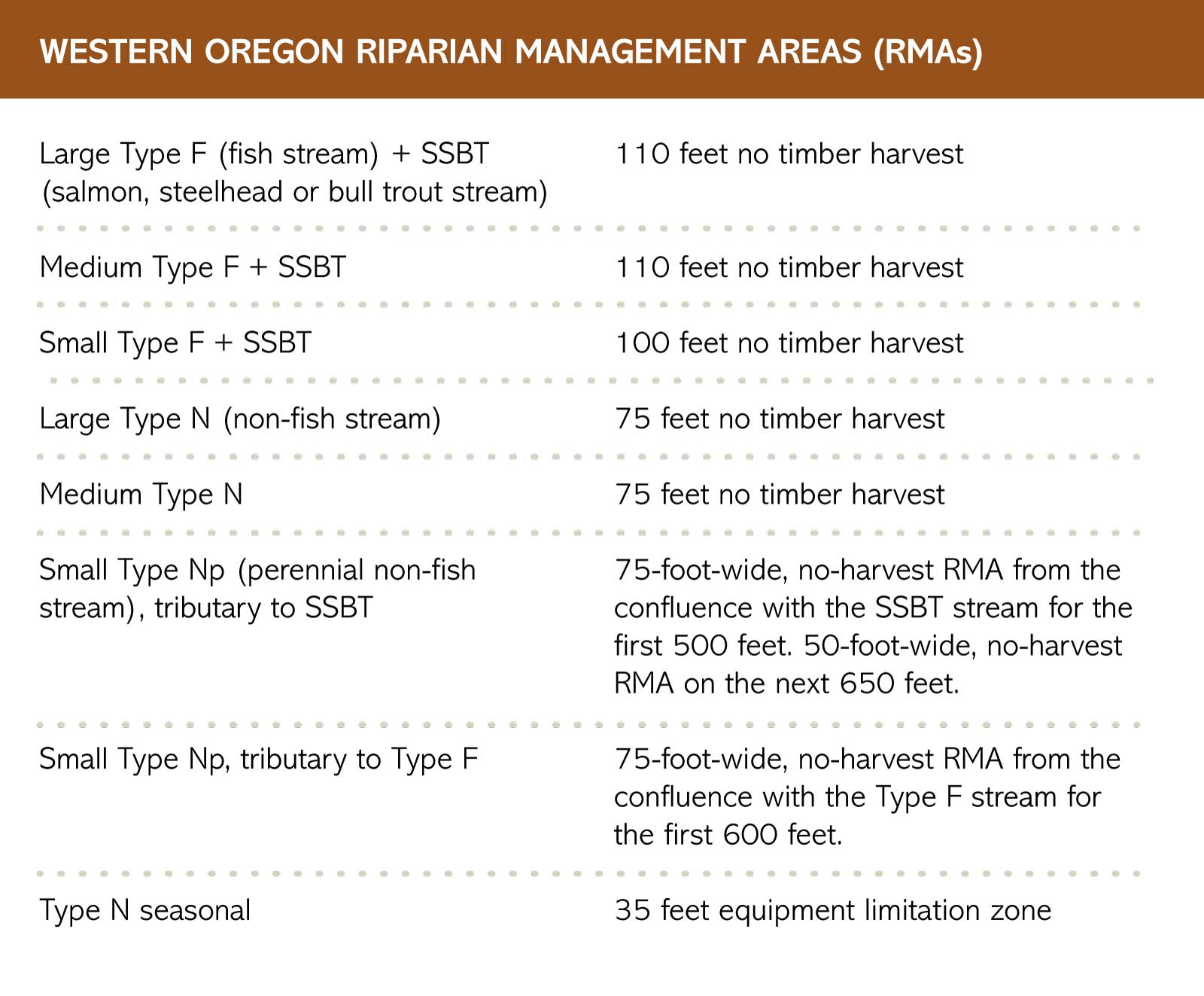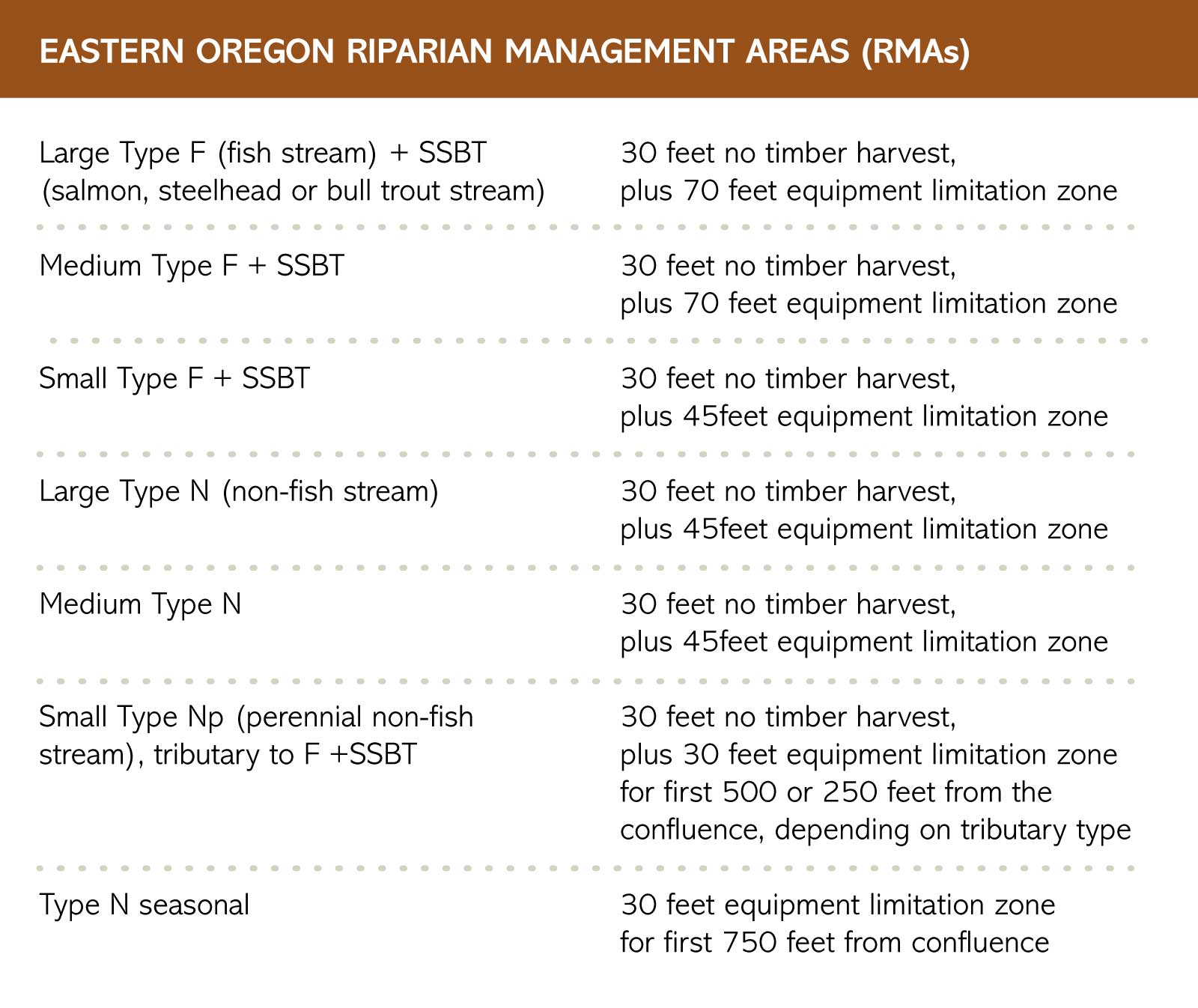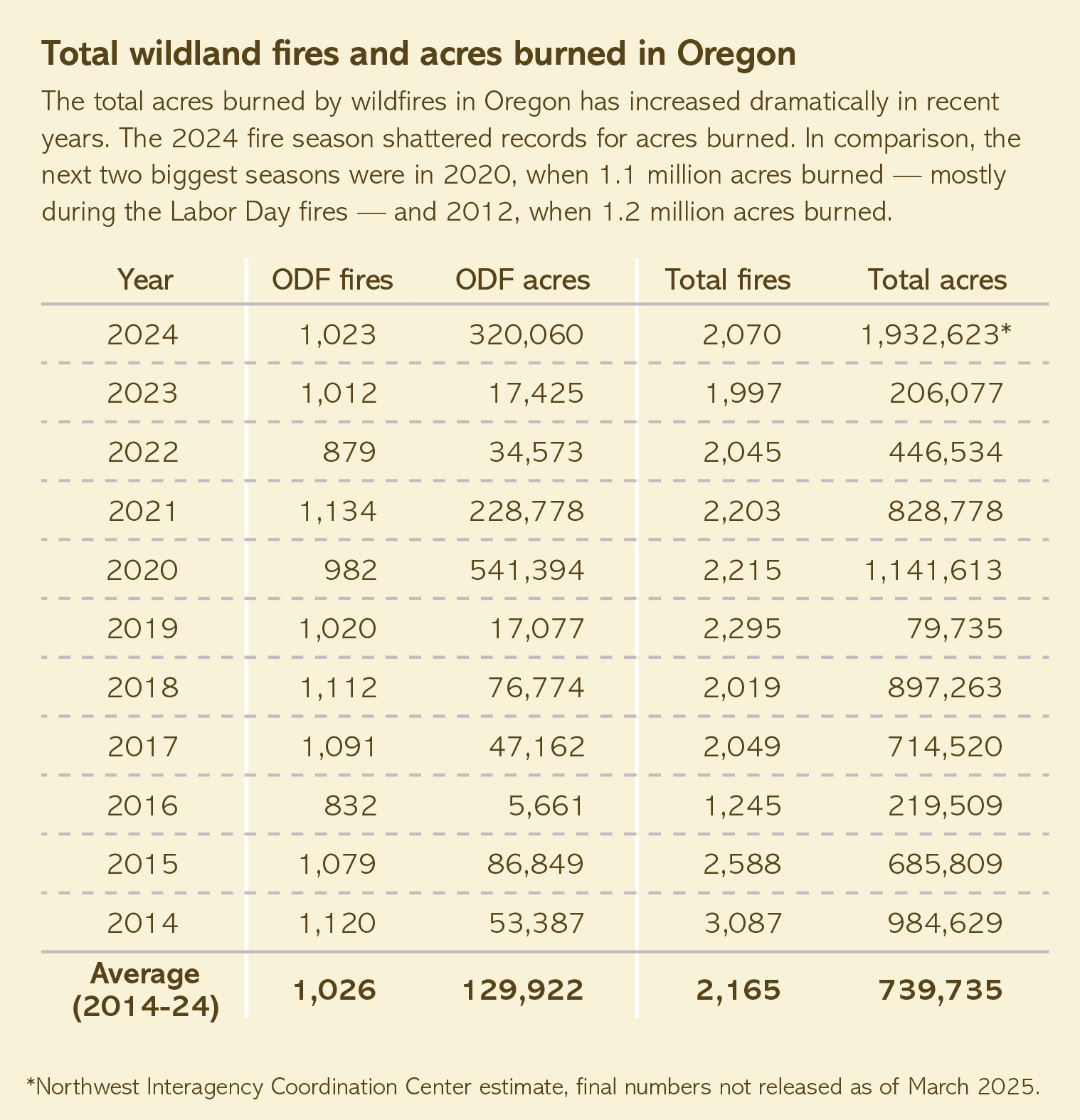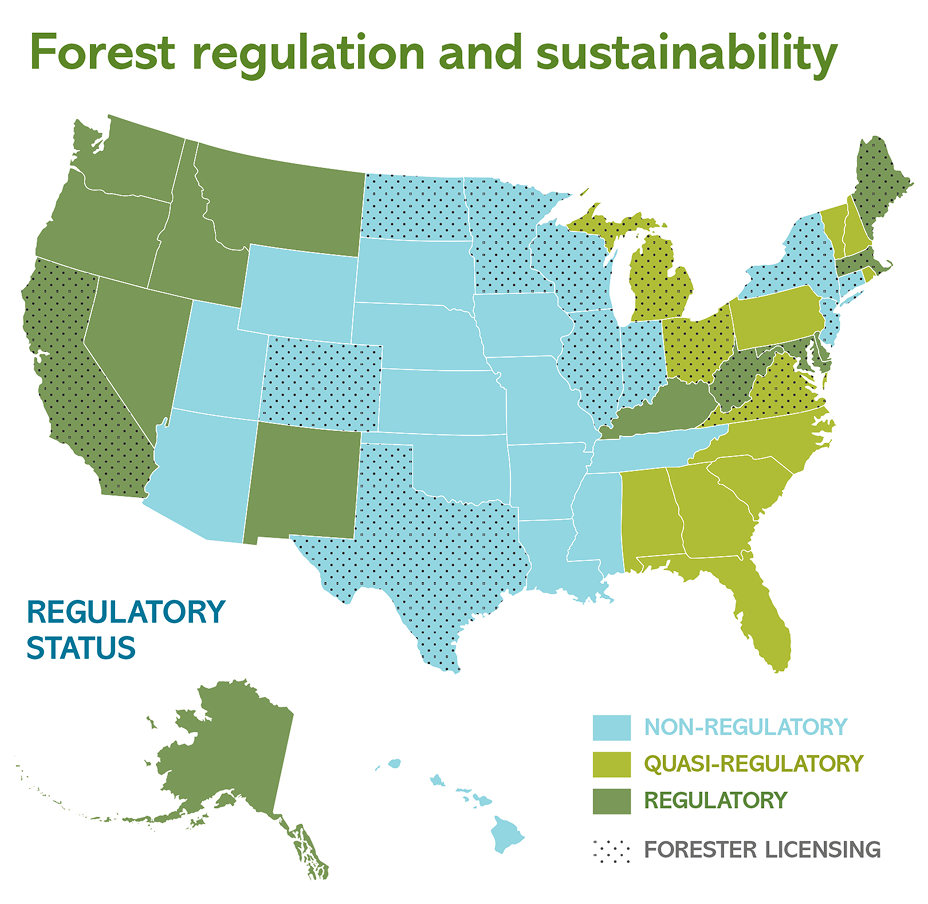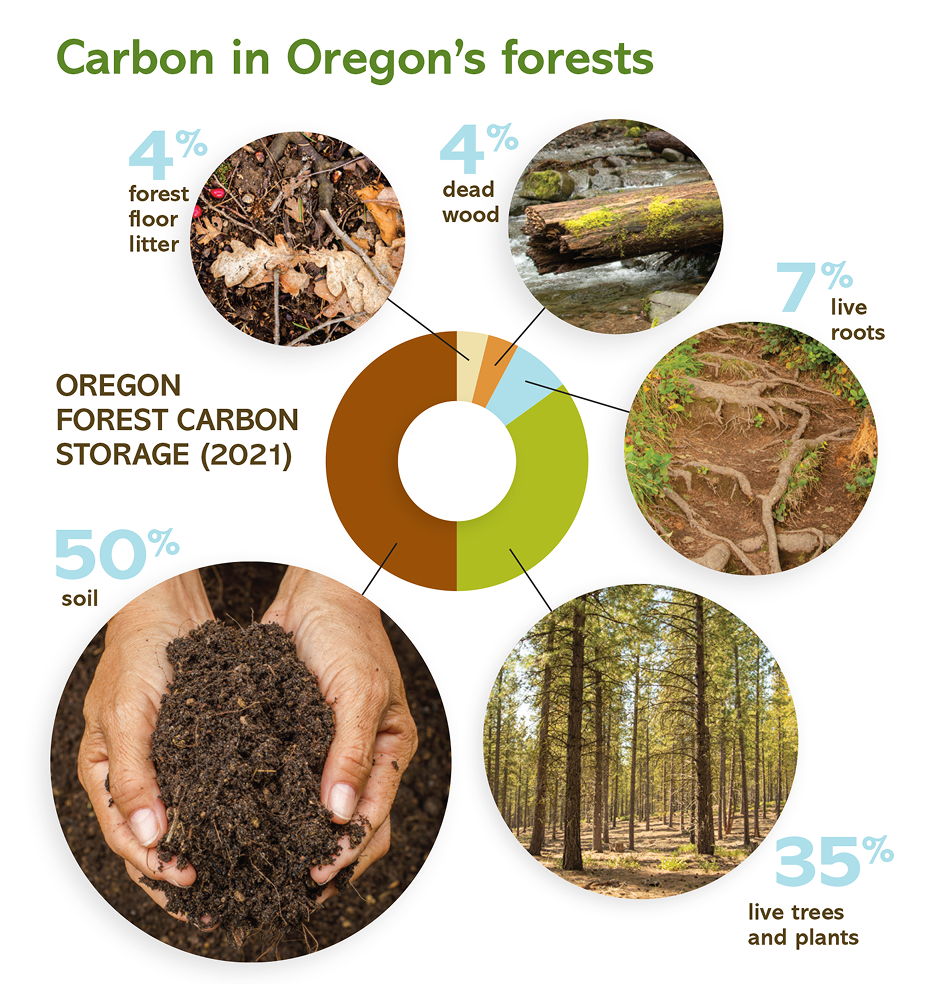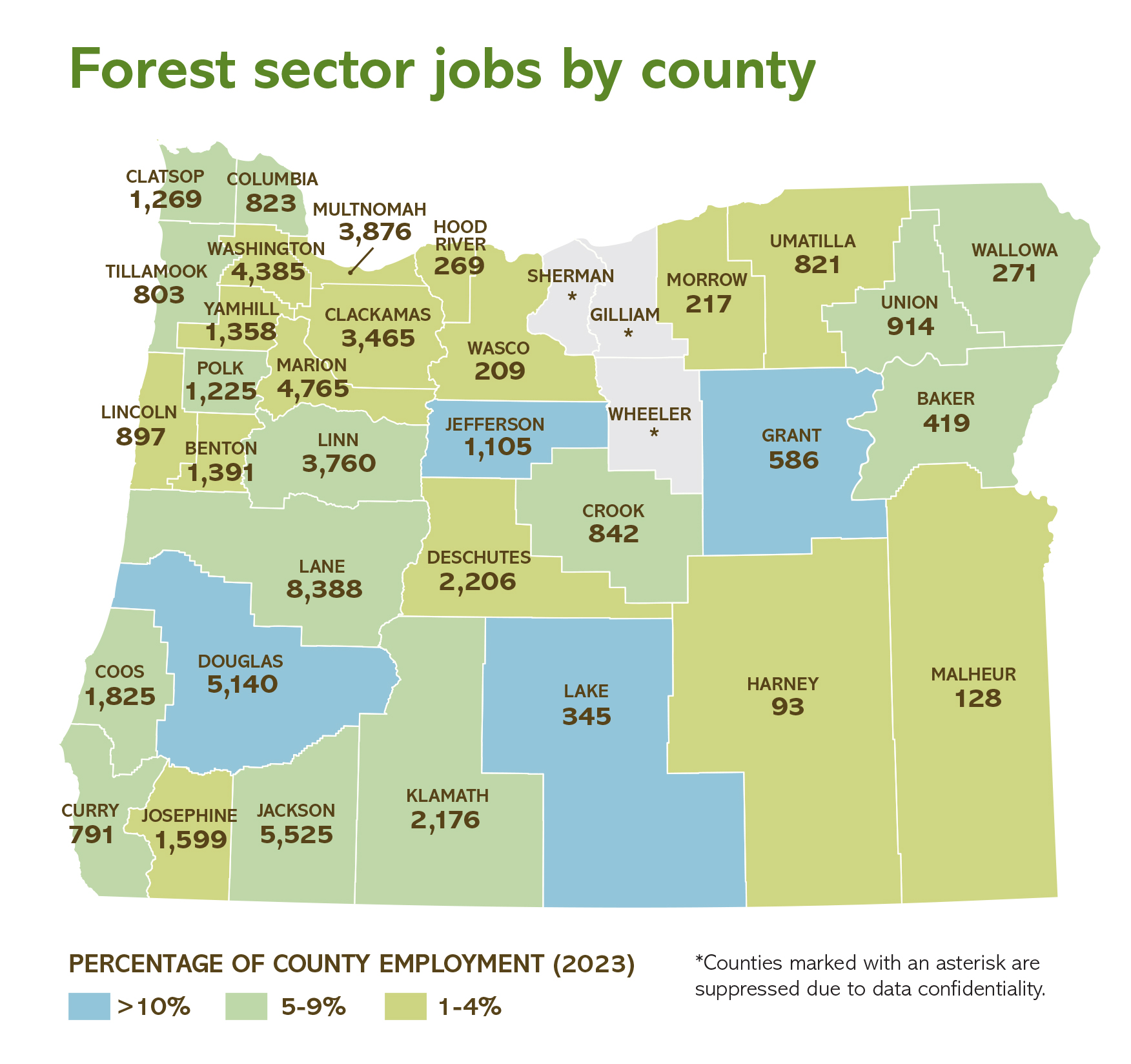FORESTLAND AREA
Nearly half of Oregon is forestland. Oregon’s forests vary by species composition and ownership. Douglas-fir trees dominate the forests in western Oregon, ponderosa pine in eastern Oregon and mixed conifers in southwest Oregon. In terms of ownership, the federal government manages 60% of Oregon forests; private owners, including Native American tribes, manage 36%; state and county governments manage 4%.
FOREST MANAGEMENT STYLES VARY BY OWNER
Oregon’s forests are managed to reflect the varied objectives and practices of a diverse array of landowners. These include the federal government, which owns the largest portion of Oregon’s forestland, as well as state, county and municipal governments, private timber companies, nonprofits, tribes and small woodland owners. Federal lands are managed primarily for ecosystem values such as threatened and endangered species habitat conservation or recreation. State lands tend to be managed for multiple uses, including recreation, water, wildlife habitat and timber. Private timber company lands are managed primarily for timber production while also providing wildlife habitat and recreation opportunities.
FORESTLAND OWNERSHIP
FORESTLAND OWNERSHIP AND TIMBER HARVEST
While the federal government manages most of the forestland in Oregon, only a fraction of Oregon’s timber harvest happens on federal land, and most of that is from thinning. About 72% of the total state harvest comes from private timberlands.
CERTIFICATION
Oregon forest landowners may choose to gain recognition from independent, third-party forest sustainability certification systems by meeting certain standards for sustainable forest management.
America’s three largest certification systems are the American Tree Farm System (ATFS), the Forest Stewardship Council (FSC) and the Sustainable Forestry Initiative (SFI).
Forest certification gives wood product consumers, architects, engineers and builders an added level of assurance that the products used in their construction projects were produced using responsible and sustainable forestry practices.
In 2024, about 5 million acres, or 46%, of the private forestland in Oregon was certified. An estimated 1.3 billion board feet of timber is harvested each year from certified forestland in Oregon. Here’s a breakdown of how much timber is estimated to come from forestland certified under each system:
